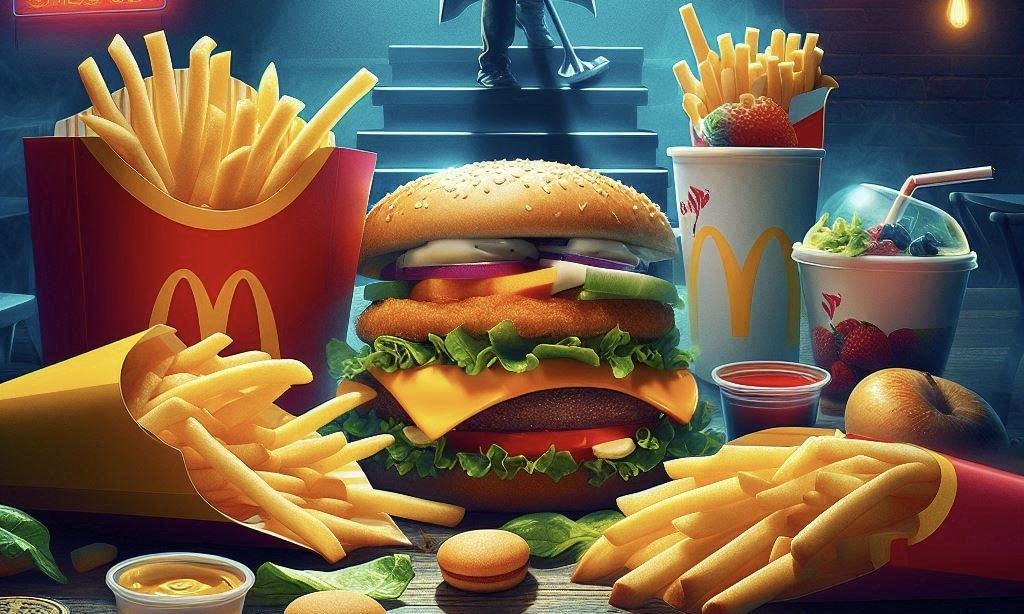McDonald's recently made headlines with the introduction of its $5 Meal Deal, a strategic move aimed at attracting cost-conscious customers and increasing foot traffic. This limited-time offer, launched last month, includes a sandwich, chicken nuggets, fries, and a drink for just five dollars, sparking curiosity and speculation about the profitability and long-term impact of such a deal.
The Motivation Behind the $5 Meal Deal
The fast-food industry has faced significant challenges over the past few years, with rising labor and ingredient costs driving up menu prices. These increases have led many consumers, particularly those from lower-income households, to cut back on dining out. In response, McDonald's and its competitors have rolled out value deals to lure back budget-conscious customers.
The $5 Meal Deal is McDonald's answer to this challenge, aiming to provide an affordable option that can drive traffic and sales. However, this strategy raises questions about profitability. Analysts estimate franchisees make between 1% and 5% profit on each $5 meal, translating to just five to twenty-five cents per meal. This slim margin is about half McDonald's regular profit margin on other menu items.
The Gamble of Value Meals
Offering a $5 meal deal is a calculated risk. While it can potentially drive significant foot traffic, it also risks cannibalizing sales of higher-margin items. A similar situation occurred when McDonald's introduced an all-day breakfast, leading some customers to opt for lower-margin breakfast items instead of more profitable burgers and meals during lunch and dinner hours.
Despite these risks, McDonald's has seen positive initial results. According to Placer.ai, the $5 meal deal launch day was the busiest Tuesday of the year for McDonald's, with an 8% increase in visits compared to the year-to-date average. This trend continued, with high traffic levels sustained in the following days. This success encouraged McDonald's franchisees to extend the $5 value meal beyond its initial four-week window in most U.S. markets.
Industry Response and Competitive Landscape
The fast-food giant's bold move has not gone unnoticed by its competitors. Burger King, Wendy's, and other fast-food chains have quickly introduced their own value meal deals, sparking a value meal war aimed at capturing the price-sensitive segment of the market.
While McDonald's has the advantage of scale and resources to weather the impact of these promotions, the long-term success of such strategies remains uncertain. Investors and industry analysts are watching closely to see if the increased foot traffic translates into sustainable sales growth and if McDonald's can maintain its profitability.
Strategic Growth and Future Outlook
Beyond the value meal strategy, McDonald's continues to pursue growth through various initiatives. The company is expanding its global footprint, with plans to open 10,000 new restaurants over the next four years. Additionally, McDonald's has launched a new drink-focused chain called CosMc’s, targeting the afternoon beverage market dominated by Starbucks and Dunkin’. This new venture aims to attract affluent consumers and diversify McDonald's revenue streams.
Conclusion
McDonald's $5 Meal Deal is a bold strategy designed to attract cost-conscious diners and boost traffic amid rising costs and economic uncertainty. While the initial response has been positive, the long-term impact on profitability and market share remains to be seen. As the fast-food giant navigates these challenges, its ability to innovate and adapt will be crucial in maintaining its dominance in the highly competitive fast-food industry.



 Trello Outage Disrupts Users as Access Issues Hit Atlassian’s Work Management Platform
Trello Outage Disrupts Users as Access Issues Hit Atlassian’s Work Management Platform  SoftBank Shares Slide as Oracle’s AI Spending Plans Fuel Market Jitters
SoftBank Shares Slide as Oracle’s AI Spending Plans Fuel Market Jitters  Mizuho Raises Broadcom Price Target to $450 on Surging AI Chip Demand
Mizuho Raises Broadcom Price Target to $450 on Surging AI Chip Demand  Intel’s Testing of China-Linked Chipmaking Tools Raises U.S. National Security Concerns
Intel’s Testing of China-Linked Chipmaking Tools Raises U.S. National Security Concerns  Coca-Cola’s Costa Coffee Sale Faces Uncertainty as Talks With TDR Capital Hit Snag
Coca-Cola’s Costa Coffee Sale Faces Uncertainty as Talks With TDR Capital Hit Snag  SK Hynix Considers U.S. ADR Listing to Boost Shareholder Value Amid Rising AI Chip Demand
SK Hynix Considers U.S. ADR Listing to Boost Shareholder Value Amid Rising AI Chip Demand  SpaceX Insider Share Sale Values Company Near $800 Billion Amid IPO Speculation
SpaceX Insider Share Sale Values Company Near $800 Billion Amid IPO Speculation  iRobot Files for Chapter 11 Bankruptcy Amid Rising Competition and Tariff Pressures
iRobot Files for Chapter 11 Bankruptcy Amid Rising Competition and Tariff Pressures  United Airlines Tokyo-Bound Flight Returns to Dulles After Engine Failure
United Airlines Tokyo-Bound Flight Returns to Dulles After Engine Failure  Coca-Cola’s Proposed Sale of Costa Coffee Faces Uncertainty Amid Price Dispute
Coca-Cola’s Proposed Sale of Costa Coffee Faces Uncertainty Amid Price Dispute  Moore Threads Stock Slides After Risk Warning Despite 600% Surge Since IPO
Moore Threads Stock Slides After Risk Warning Despite 600% Surge Since IPO  Nvidia Weighs Expanding H200 AI Chip Production as China Demand Surges
Nvidia Weighs Expanding H200 AI Chip Production as China Demand Surges  CMOC to Acquire Equinox Gold’s Brazilian Mines in $1 Billion Deal to Expand Precious Metals Portfolio
CMOC to Acquire Equinox Gold’s Brazilian Mines in $1 Billion Deal to Expand Precious Metals Portfolio  Nomura Expands Alternative Assets Strategy With Focus on Private Debt Acquisitions
Nomura Expands Alternative Assets Strategy With Focus on Private Debt Acquisitions  Azul Airlines Wins Court Approval for $2 Billion Debt Restructuring and New Capital Raise
Azul Airlines Wins Court Approval for $2 Billion Debt Restructuring and New Capital Raise  Evercore Reaffirms Alphabet’s Search Dominance as AI Competition Intensifies
Evercore Reaffirms Alphabet’s Search Dominance as AI Competition Intensifies  Korea Zinc Plans $6.78 Billion U.S. Smelter Investment With Government Partnership
Korea Zinc Plans $6.78 Billion U.S. Smelter Investment With Government Partnership 































